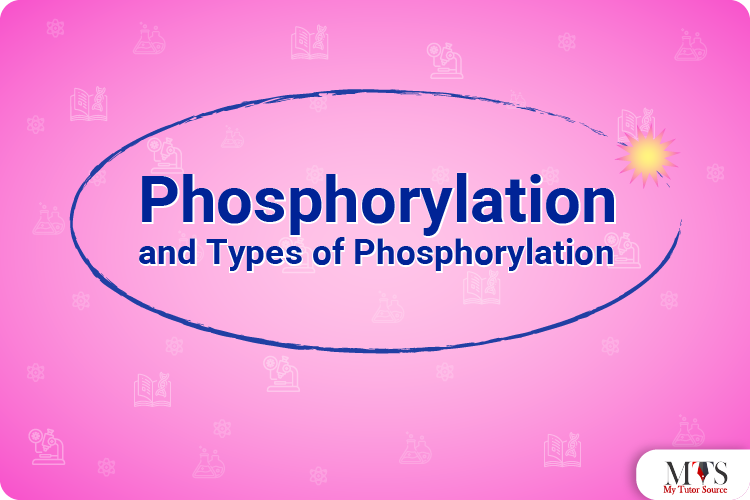

Phosphorylation plays an important role in the areas of both Chemistry and Biology. Let’s learn more about it and how it works:
Phosphorylation can be defined as the chemical addition of a PO3- (also known as a phosphoryl group) to an organic molecule. There is a process that is the complete opposite of the phosphorylation process and it is known as dephosphorylation. Dephosphorylation is the removal of a phosphoryl group (PO3-) from an organic molecule chemically. Both processes (phosphorylation and dephosphorylation) are performed by enzymes such as kinases and phosphotransferases, etc. The phosphorylation reaction is of paramount importance in the fields of molecular biology and biochemistry since it is a vital reaction in energy storage and release, protein and enzyme function, and sugar metabolism.
Well, phosphorylation sits at the center of all important reactions happening in the cell. It plays an important critical regulatory role in our cells and performs the following roles:
There are three major types of phosphorylation. They are oxidative phosphorylation, glucose phosphorylation, and protein phosphorylation. Let’s dive straight into them and find out what they are:
Oxidative phosphorylation is the process by which the cells store and release chemical energy in the body. In a eukaryotic cell, oxidative phosphorylation occurs in the mitochondria which is the powerhouse of the cell. The reactions occurring in the electron transport chain’s chemiosmosis are actively involved in oxidative phosphorylation. In a nutshell, the redox reaction passes electrons from proteins via the electron transport chain present in mitochondria’s inner membrane. This releases energy and that energy is used to make ATP in chemiosmosis.
During this procedure, the FADH2 & NADH molecules deliver electrons to the electron transport chain where they move from higher to lower energy and release energy which is partly used to pump hydrogen ions (H+) to create an electrochemical gradient. Lastly, the electrons are transferred to oxygen to bond with H+ for the formation of water. At the dephosphorylation of ATP, the cleaved phosphate group releases energy so the cell can use it again. Other than Adenosine, other bases also undergo phosphorylation such as Guanosine.
Glucose also undergoes phosphorylation as the first step of its catabolism. For instance, the very first step of glycolysis of D-glucose is the conversion of D-glucose into D-glucose-6-phosphate. Glucose, on its own, is quite small in size and can easily permeate cells. On the other hand, phosphorylation creates a molecule large enough in size that it cannot readily permeate tissues. So, the phosphorylation of glucose is important to regulate blood glucose concentration which is related to glycogen formation and thus affects cardiac growth.
Lastly, we have Protein Phosphorylation which was not studied until the 1930s, however, in 1906, Phoebus Levene at the Rockefeller Institute for Medical Research was able to identify Phosvitin which is a phosphorylated protein.
So, what is protein phosphorylation? It is the process of the addition of a phosphoryl group to an amino acid which is normally serine, however, the process can also occur on histidine (in prokaryotes) and threonine and tyrosine (in eukaryotes). In this procedure, a phosphate group undergoes a reaction with a hydroxyl (-OH) group of a tyrosine, threonine, or serine side chain where the enzyme protein kinase creates a covalent bond between a phosphate group and the amino acid. It occurs differently in prokaryotes and eukaryotes. The Posttranslational modifications (PTM) are the best-studied types of phosphorylation in which proteins are phosphorylated after they are translated from an RNA template.
Another amazing example of protein phosphorylation is histones phosphorylation. It occurs in eukaryotes where it modifies the chromatin structure and changes its DNA-protein and protein-protein interactions. This process normally occurs when the DNA gets damaged and it results in the space around the broken DNA opening up so the repair mechanisms can get to their work.
So, there you have a complete breakdown of phosphorylation and its three major types. Best of luck!